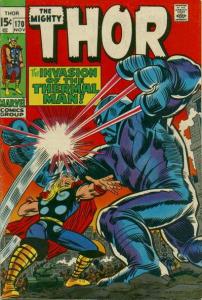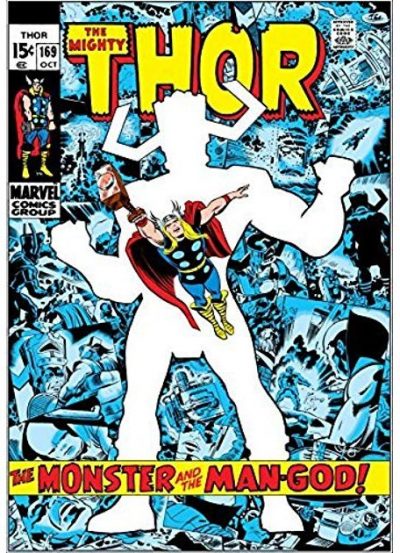The subject of today’s post, in addition to being another fine installment in writer Roy Thomas and artist John Buscema’s original run on The Avengers, also happens to have been my first real encounter (outside of a couple of cameos) with Marvel Comics’ Master of the Mystic Arts, Doctor Strange — or, at least, I think it was.
 The problem here is that I know that, once upon a time, I owned a copy of Marvel Collectors’ Item Classics #19 — a terrific, double-sized reprint book that not only included a classic early Doctor Strange tale (from Strange Tales #128), but also an equally-classic Fantastic Four story (from the 27th issue of that team’s title) that guest-starred the good Doctor. A double dose of Doc, if you will. And since that book would have been on sale in November, 1968, it would necessarily have been my first Strange-featuring comic — if I’d bought it new off the stands, that is. Which I have no truly compelling reason to believe I didn’t.
The problem here is that I know that, once upon a time, I owned a copy of Marvel Collectors’ Item Classics #19 — a terrific, double-sized reprint book that not only included a classic early Doctor Strange tale (from Strange Tales #128), but also an equally-classic Fantastic Four story (from the 27th issue of that team’s title) that guest-starred the good Doctor. A double dose of Doc, if you will. And since that book would have been on sale in November, 1968, it would necessarily have been my first Strange-featuring comic — if I’d bought it new off the stands, that is. Which I have no truly compelling reason to believe I didn’t.
Still — and allowing for how vague many of my comics-buying memories are after half a century’s passage — I somehow don’t believe that was the case. When I reread both these books now, Avengers #61 simply feels like it was my first Dr. Strange comic, and MCIC #19 … doesn’t. So I’ve decided, for the purposes of this blog, that I probably came into possession of my copy of the reprint book some time later, probably via trade with (or sale by) a friend. If I’m wrong — well, we’ll never know, right? (Besides which, nobody but me likely cares all that much.)
But even if Avengers #61 wasn’t the first comic book I ever read that featured Dr. Strange, it was certainly the first non-reprint book to include the hero that I ever picked up. Without it, I might well not have taken to the character as much (and almost certainly not as quickly) as I did; for, immediately following my reading this issue, I became a regular purchaser of the Doctor Strange series — and I’d remain a faithful reader of the title for years to come, sticking around through its rather frequent cancellations and revivals, with its star ultimately becoming my second favorite Marvel character (right after Thor).
Which is pretty much just what Roy Thomas and his colleagues at Marvel hoped would happen, when they decided to guest-star Doctor Strange in Avengers back in late 1968. Read More


















